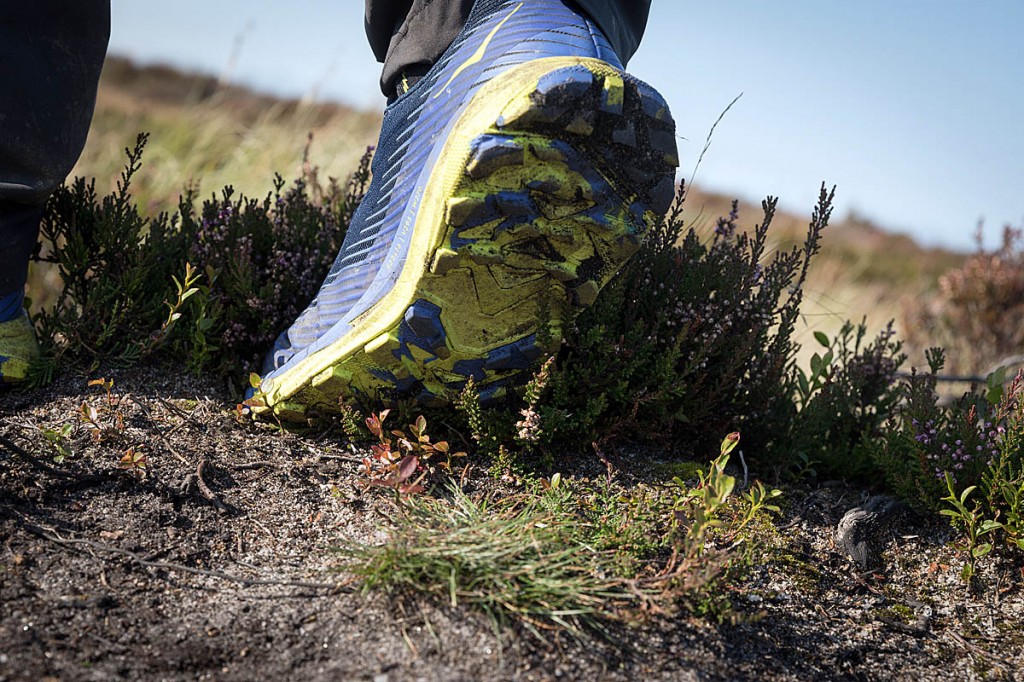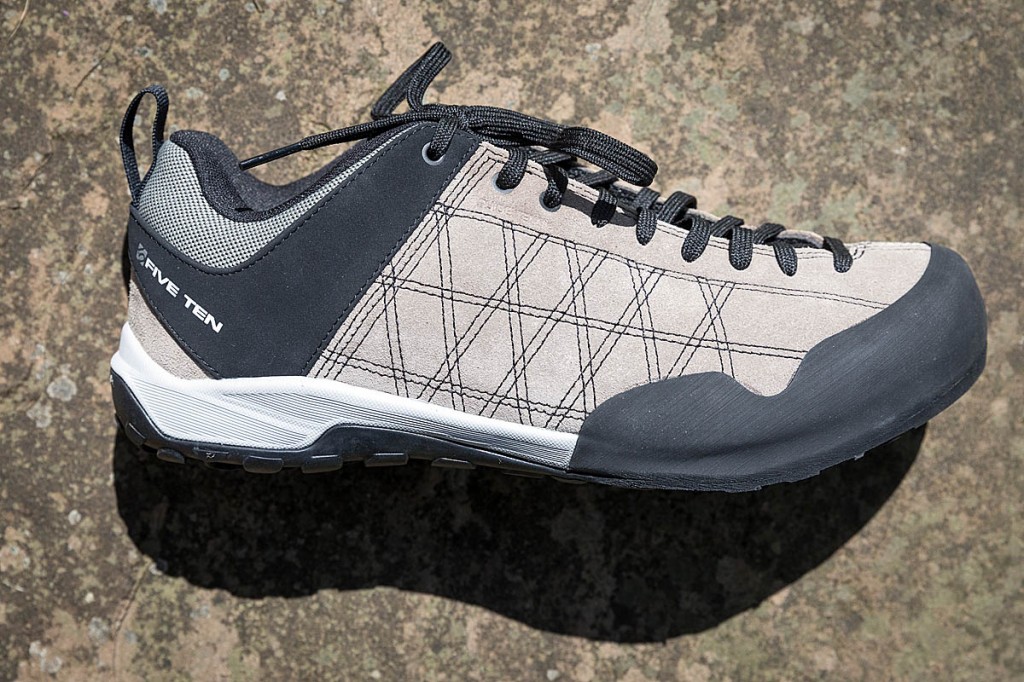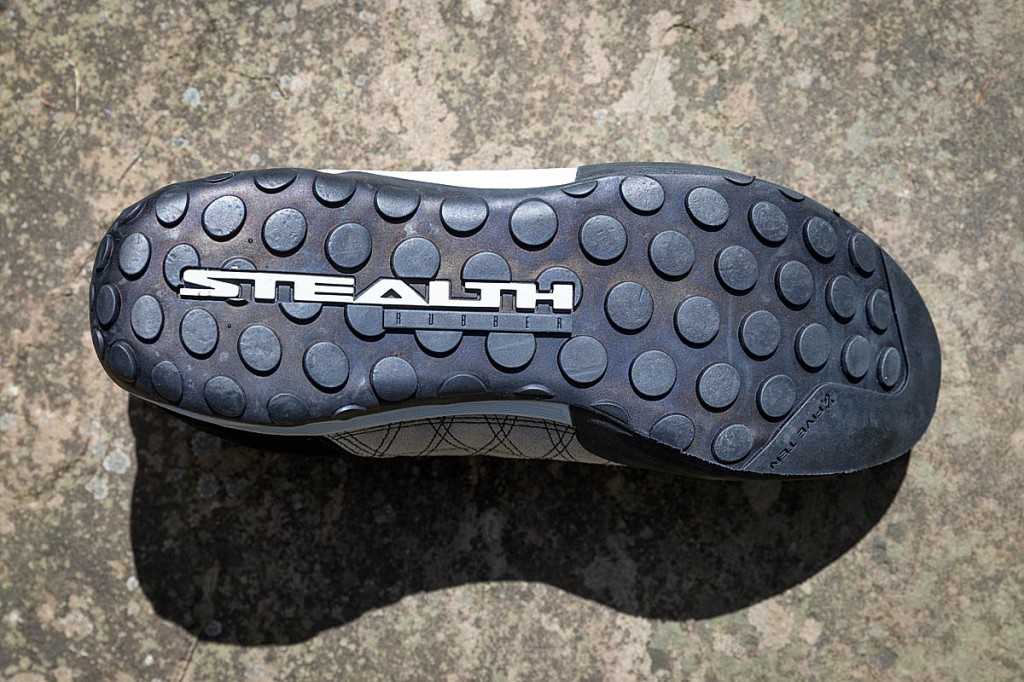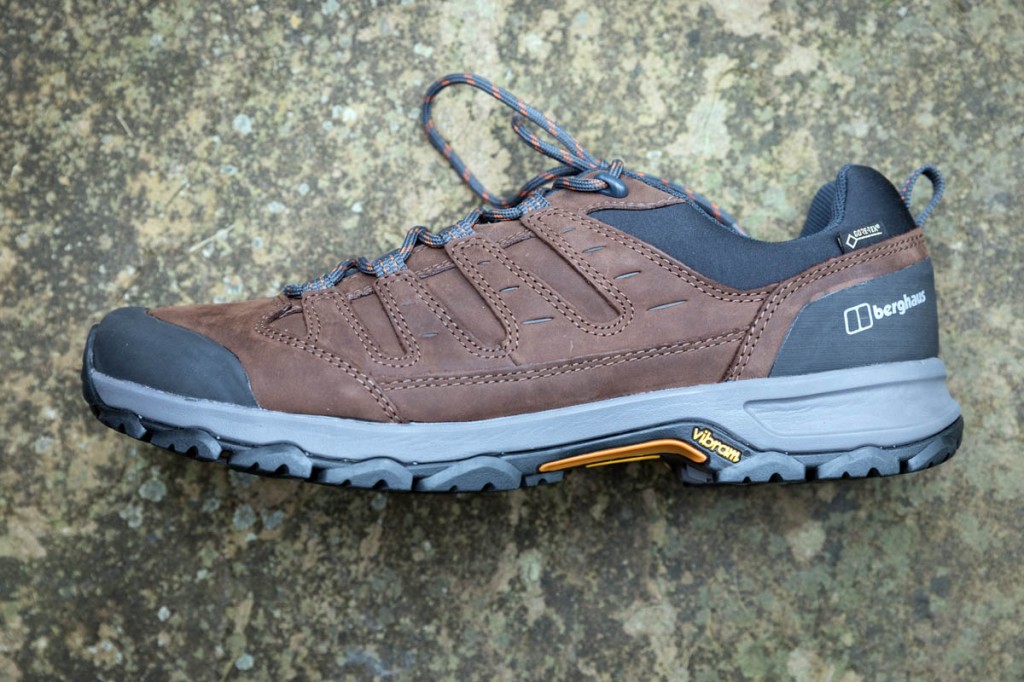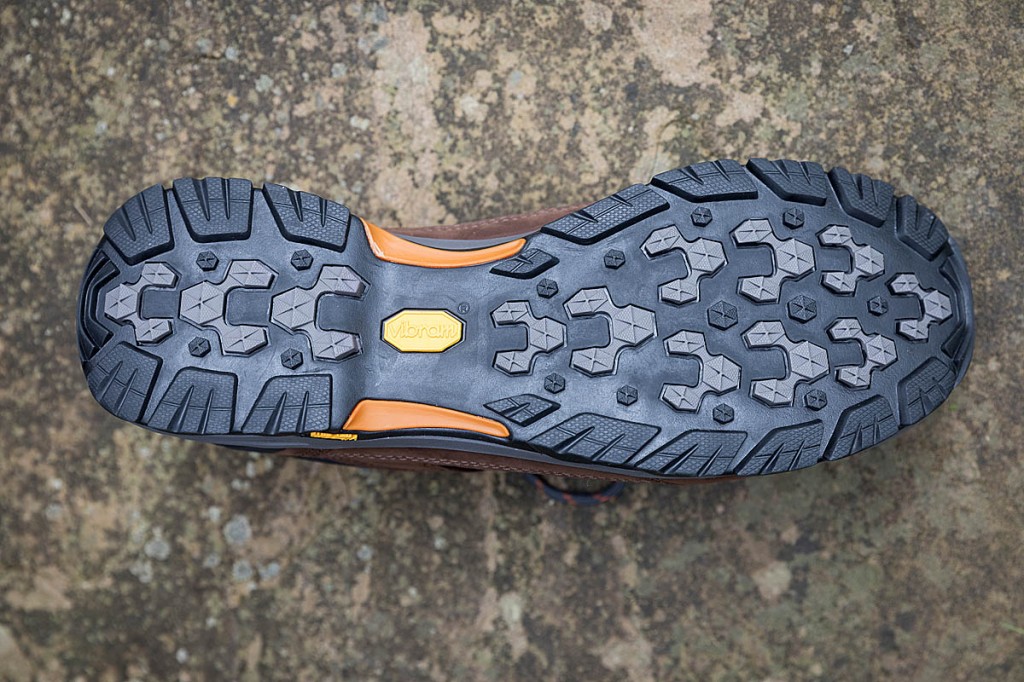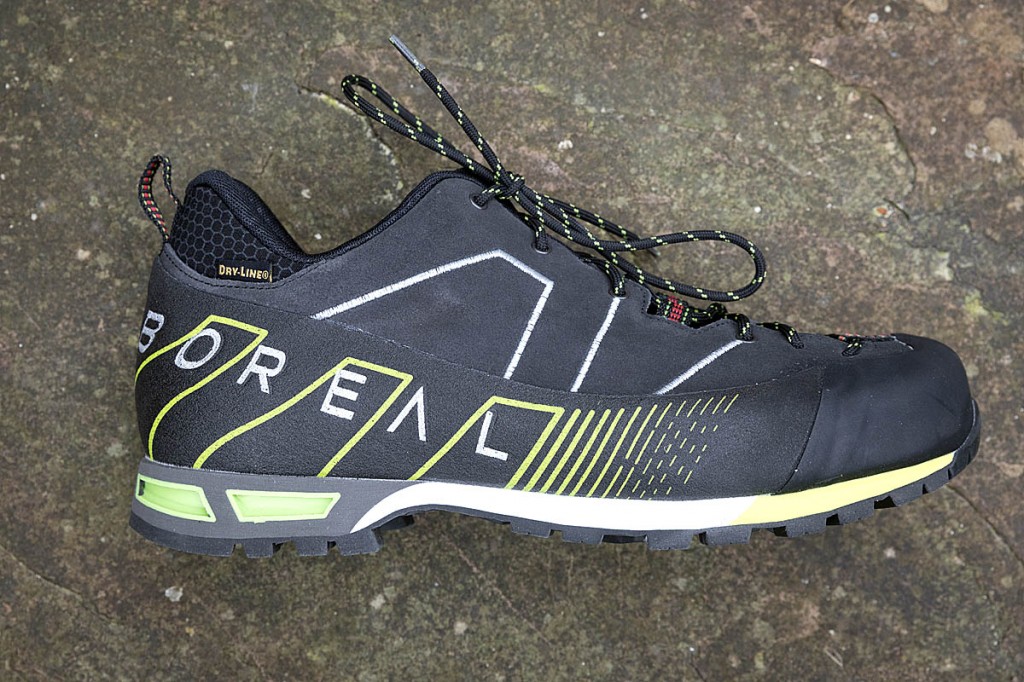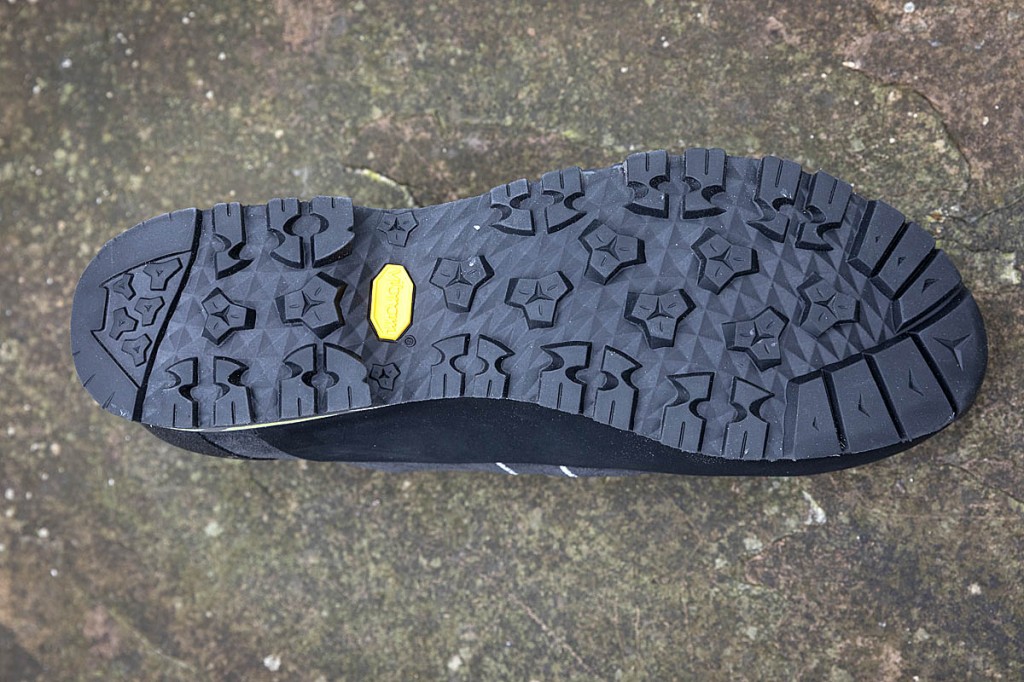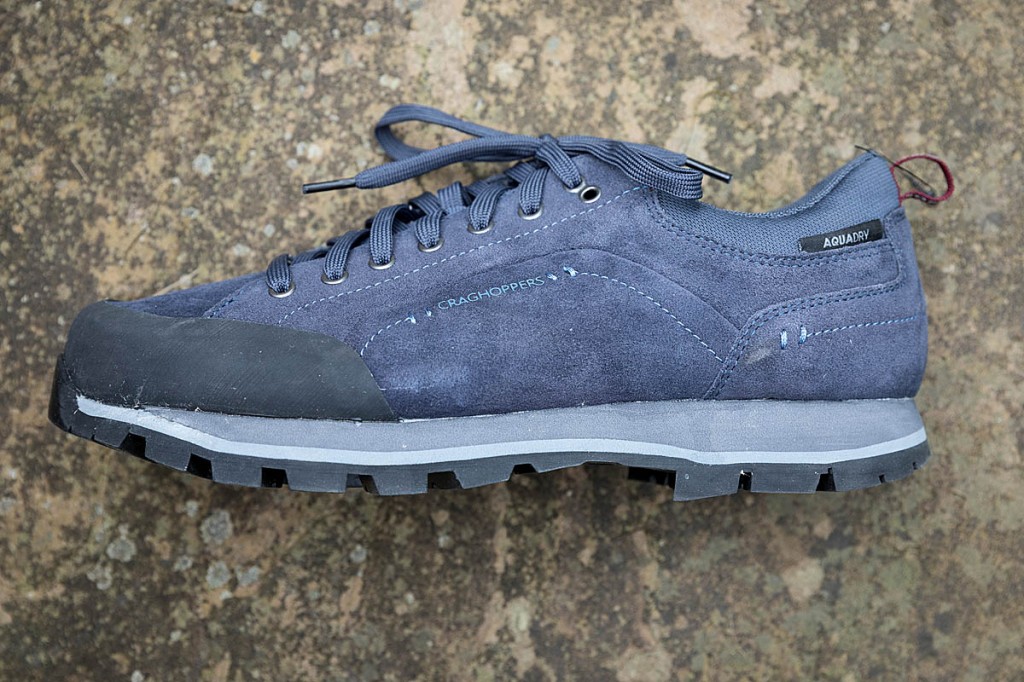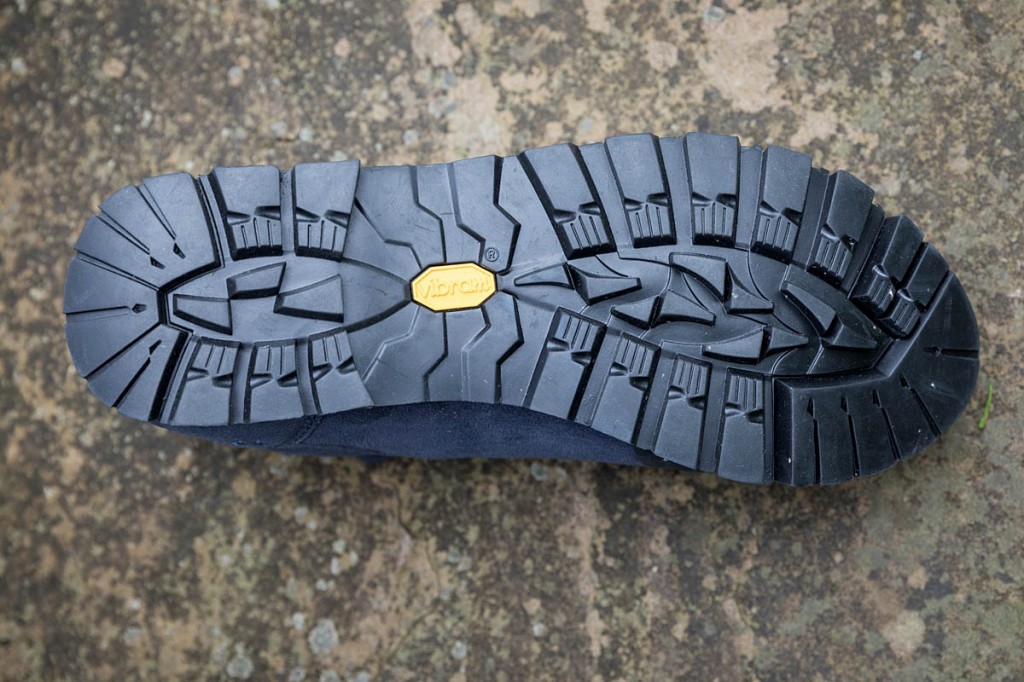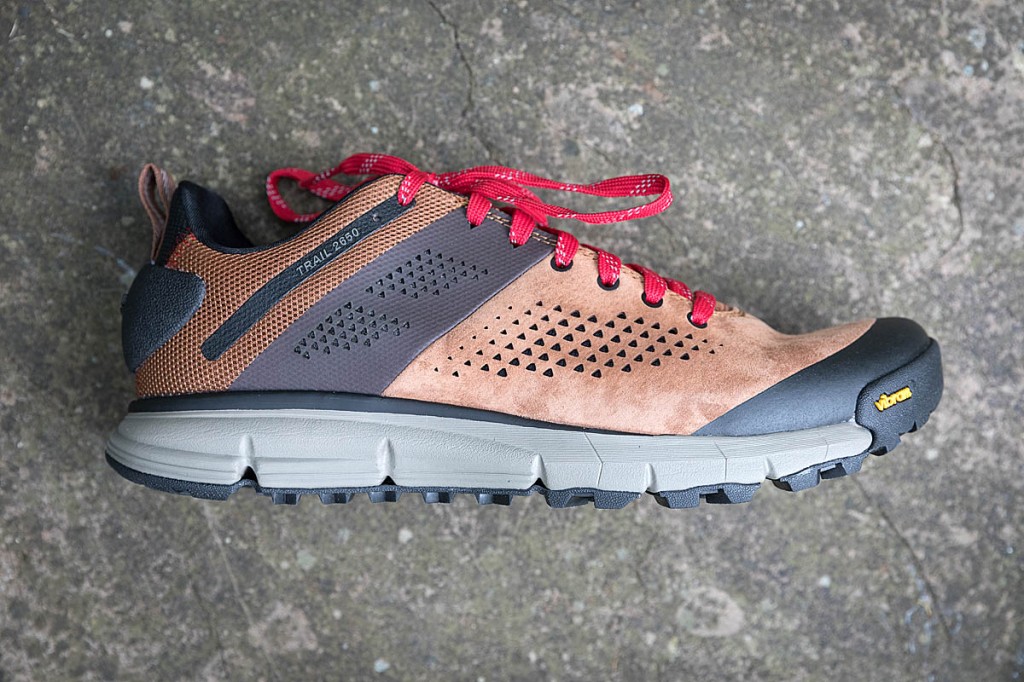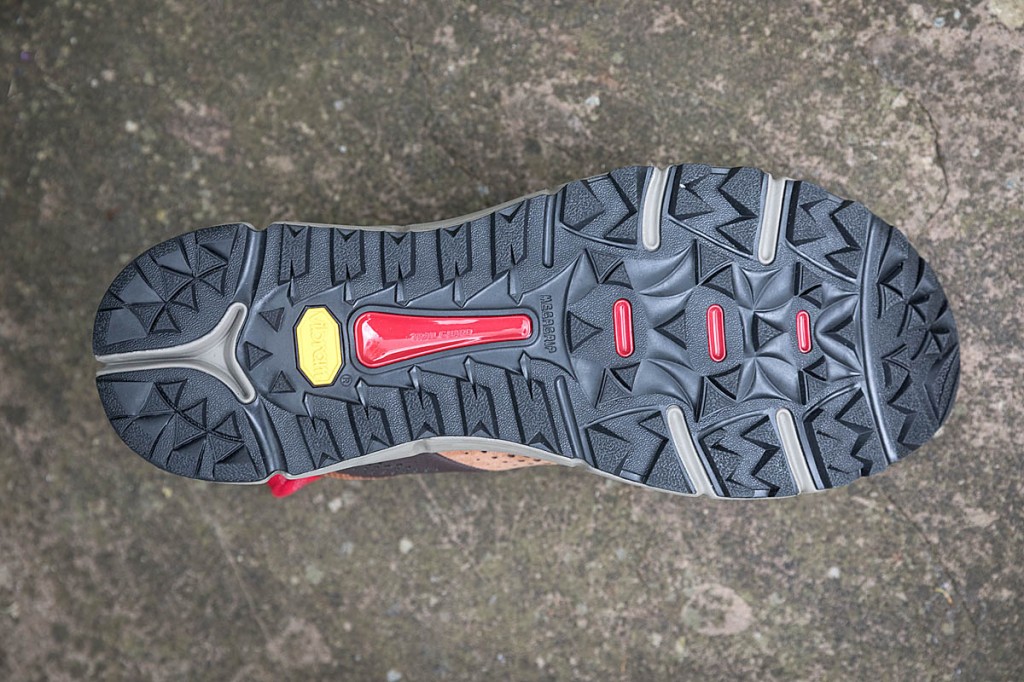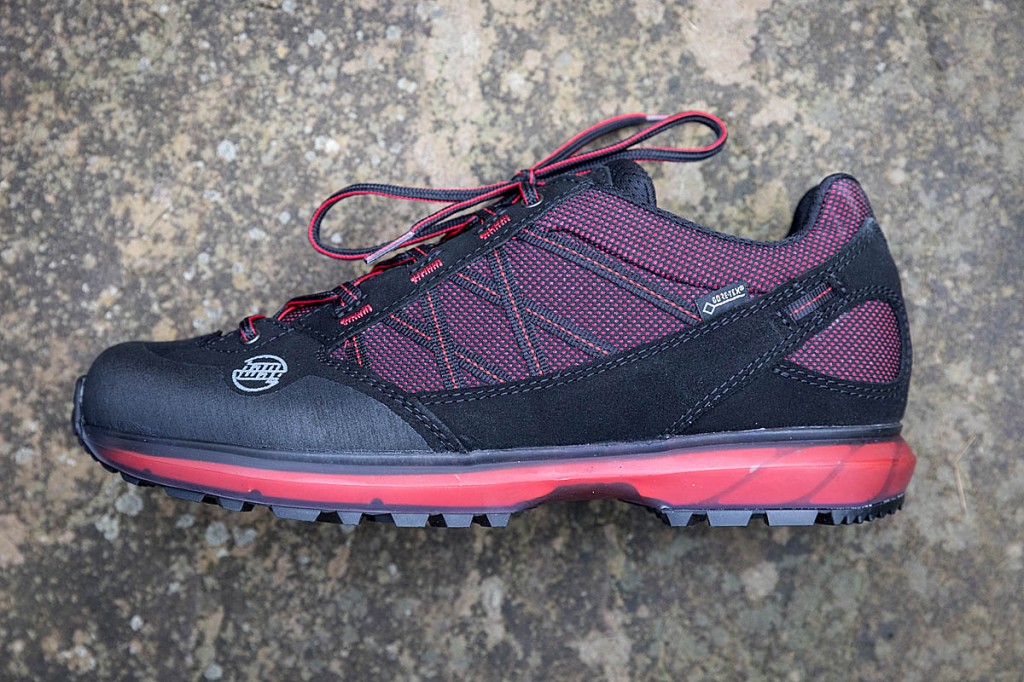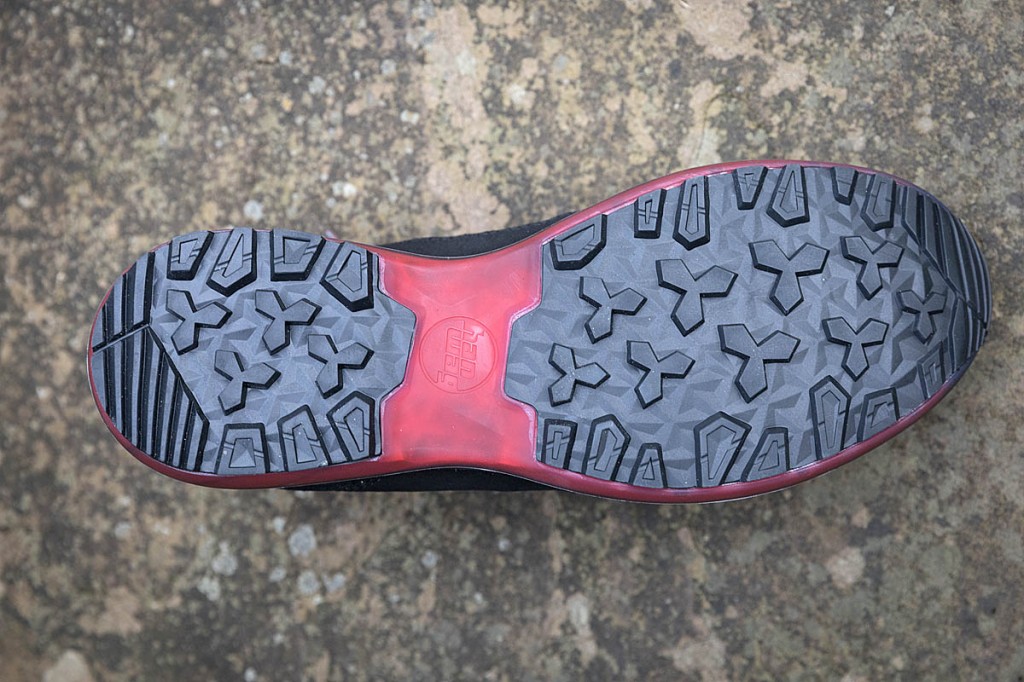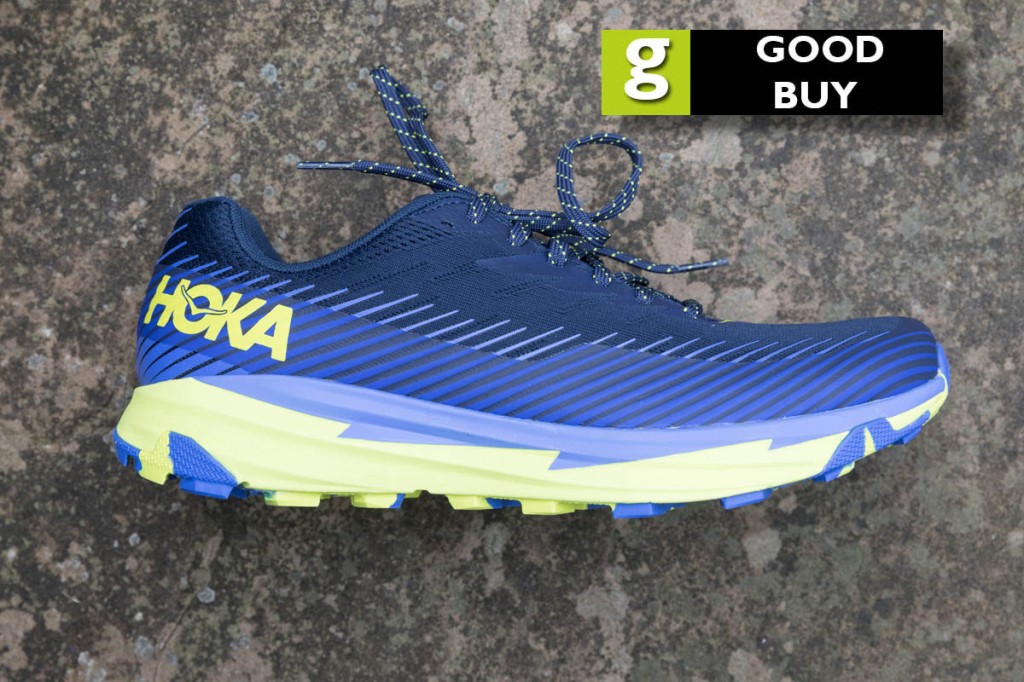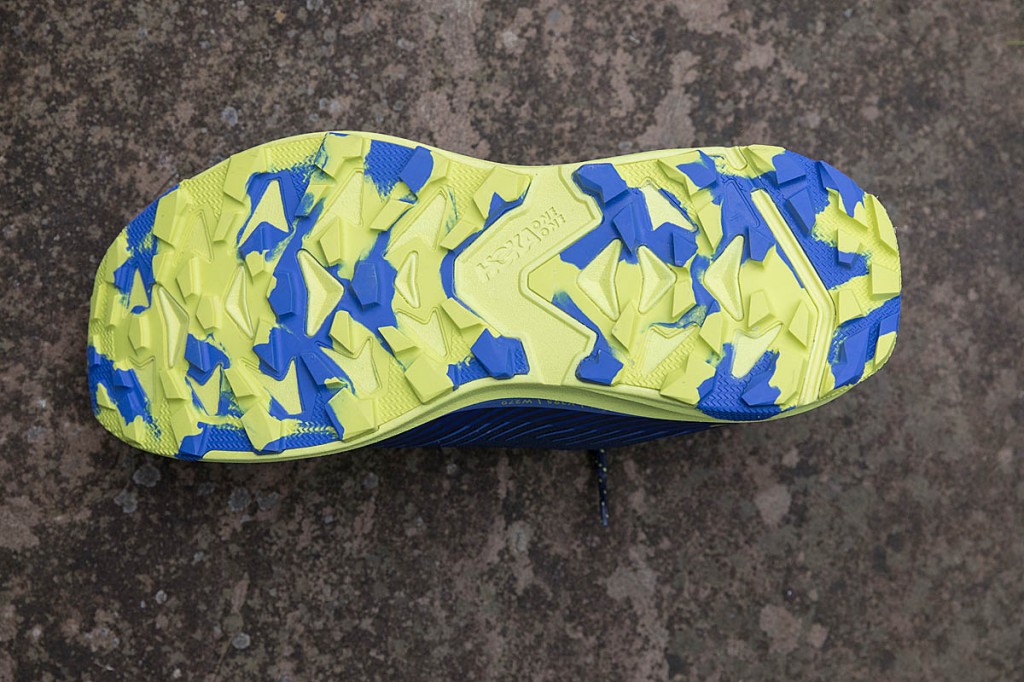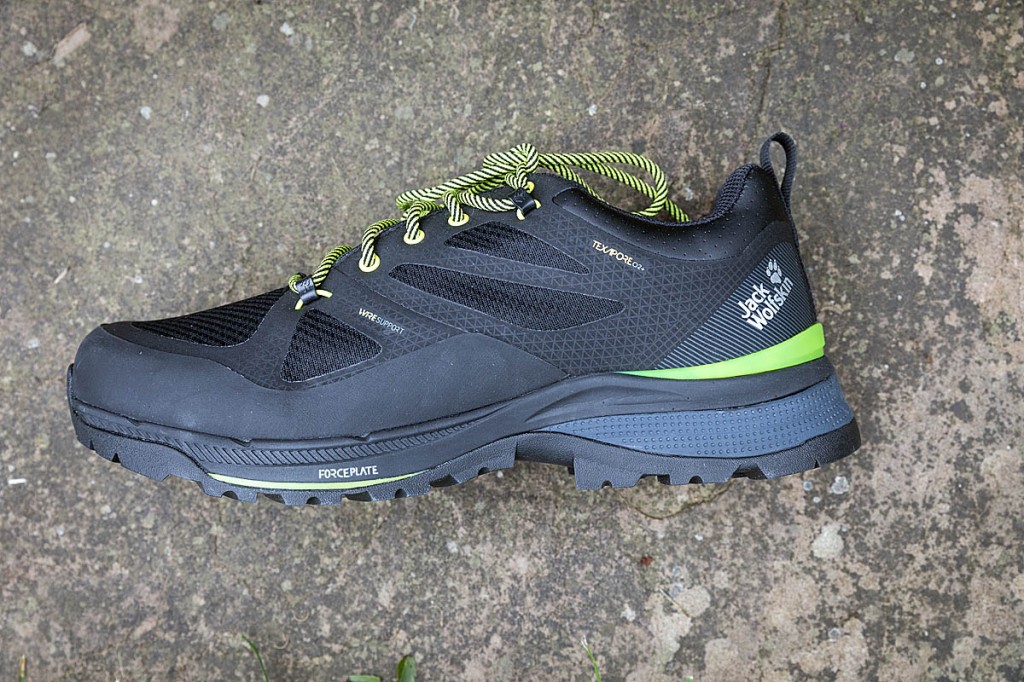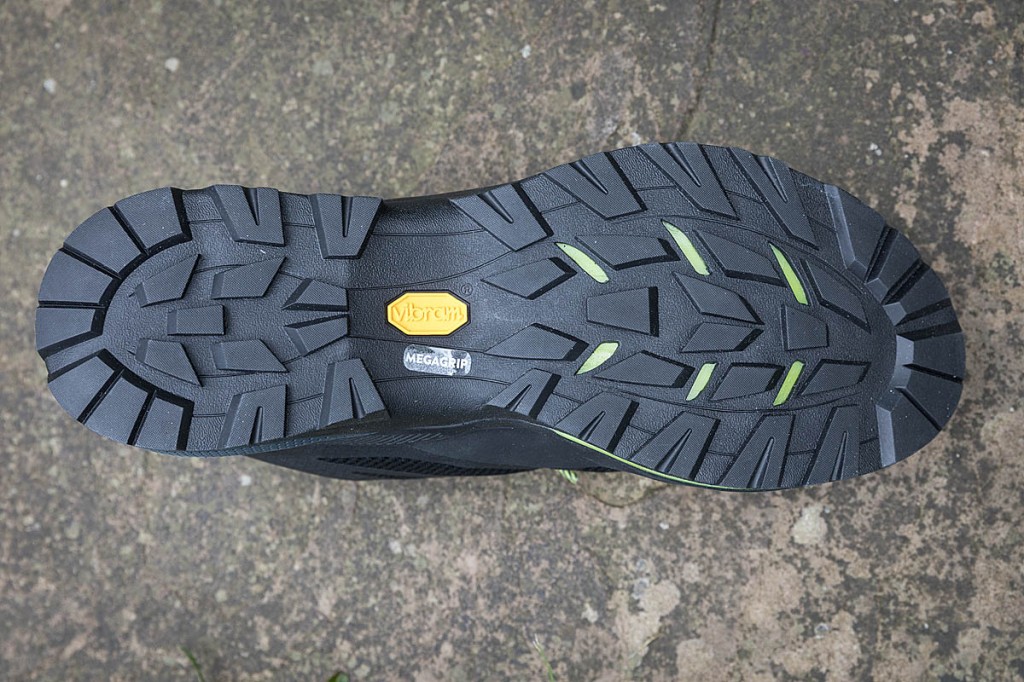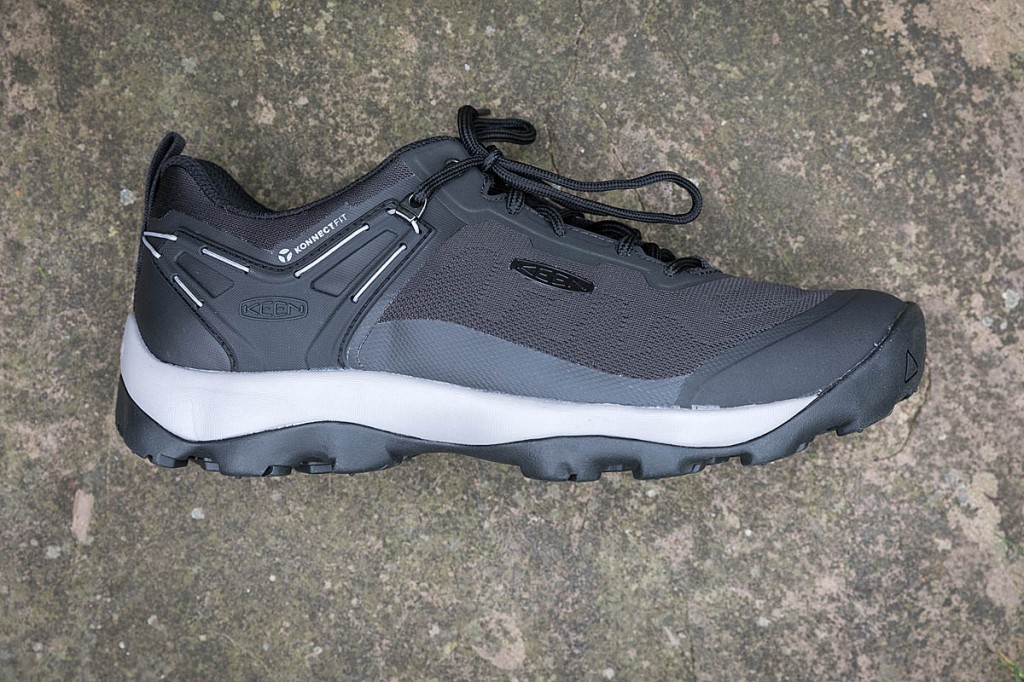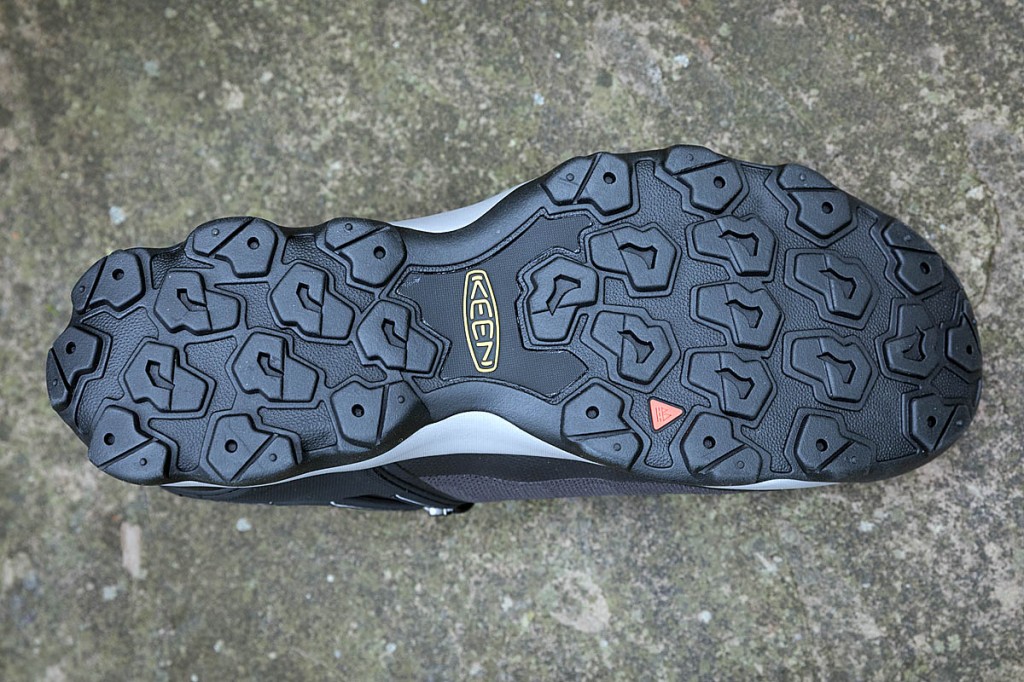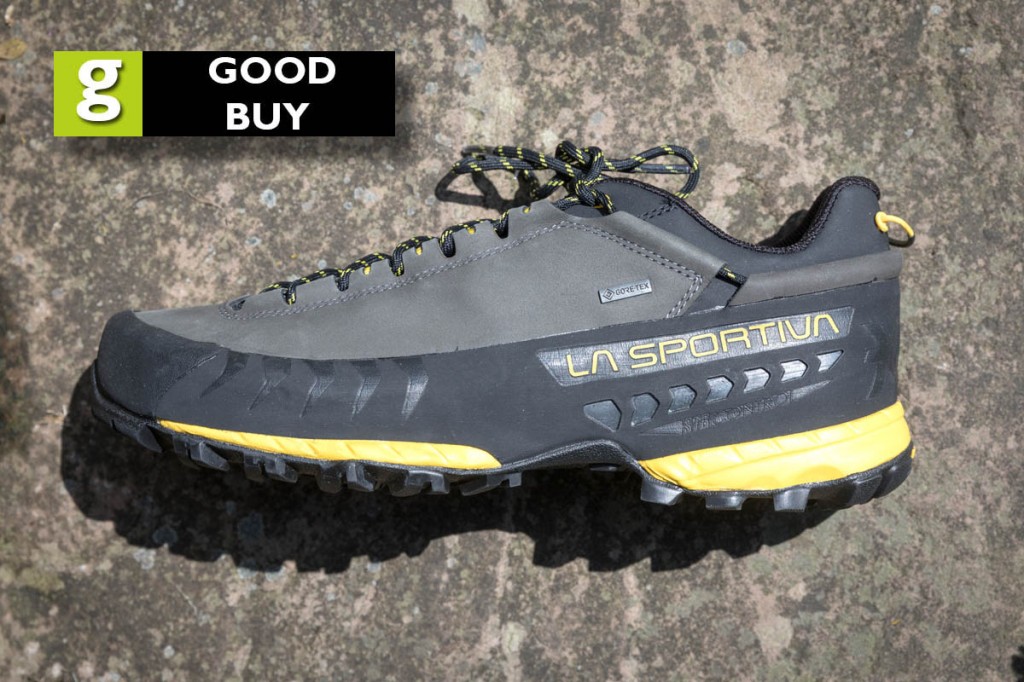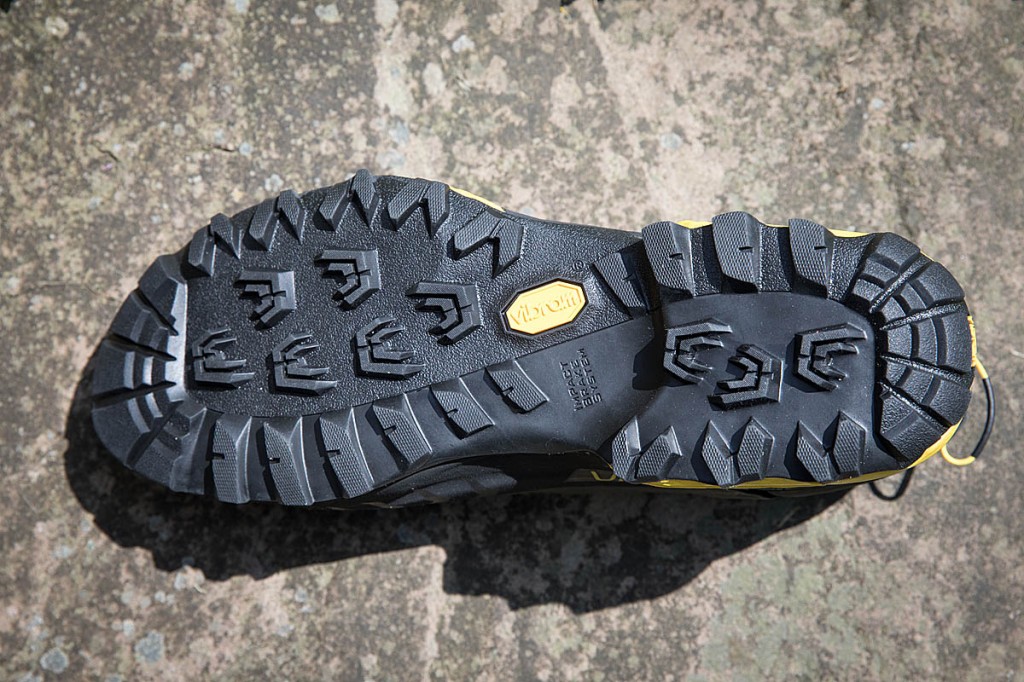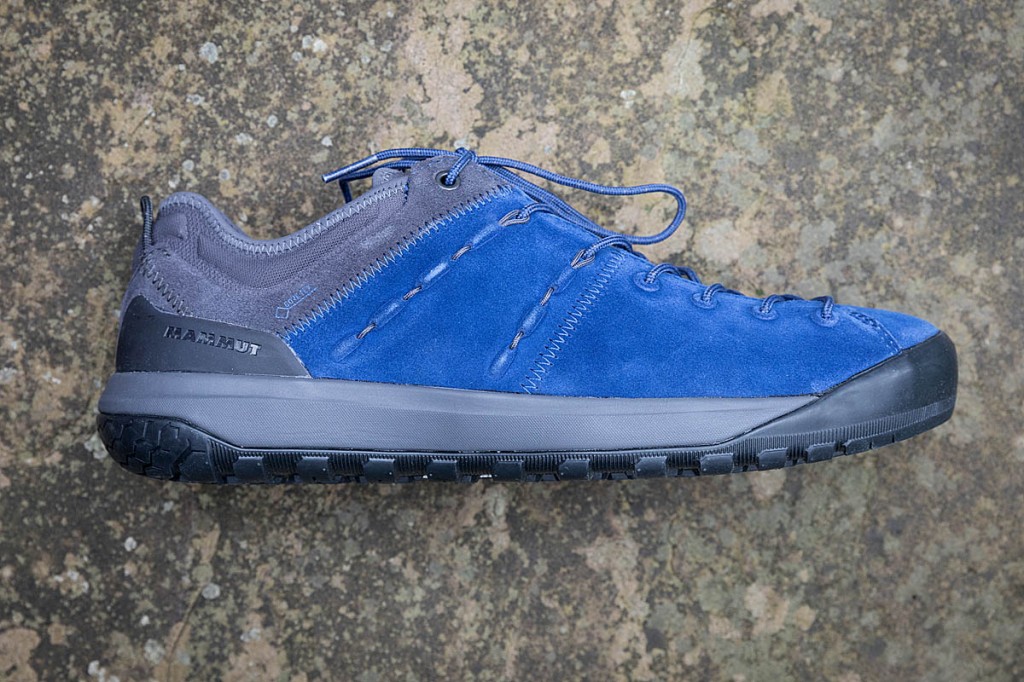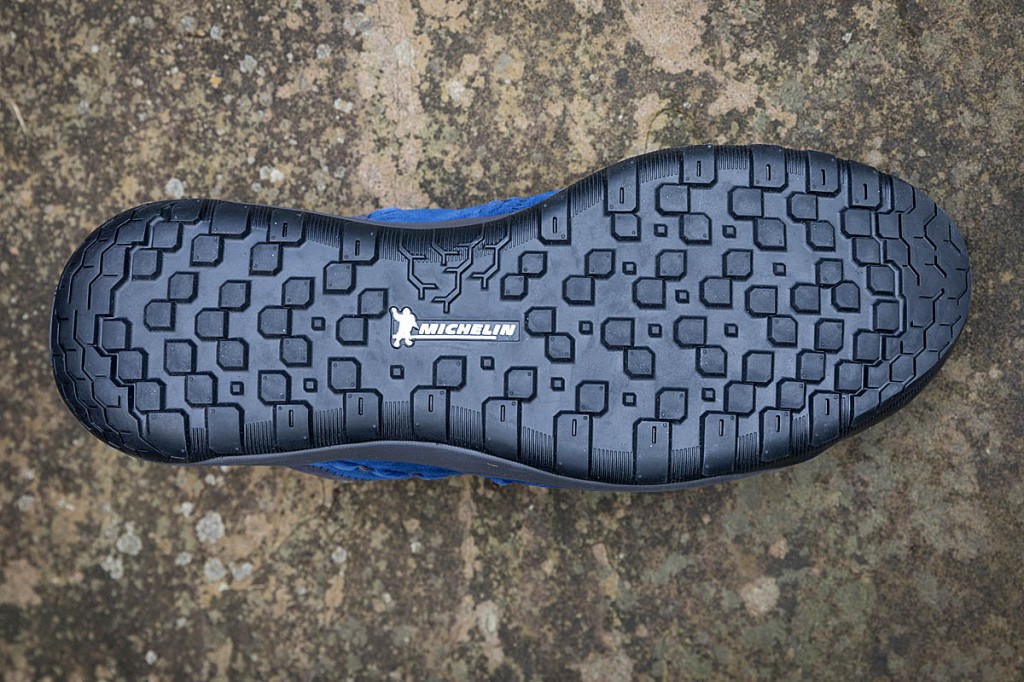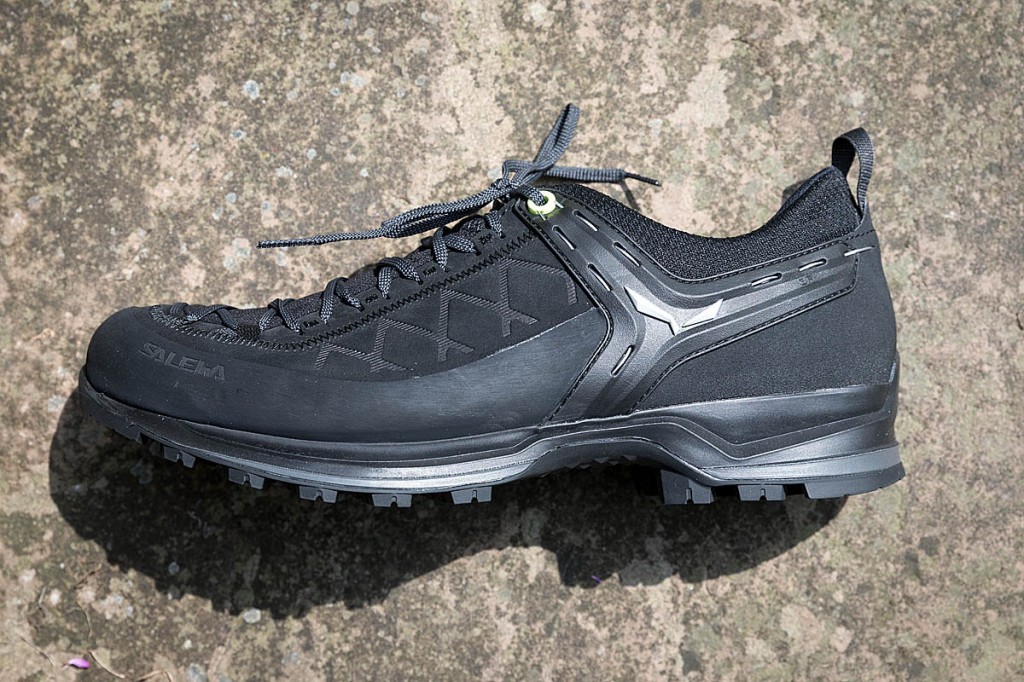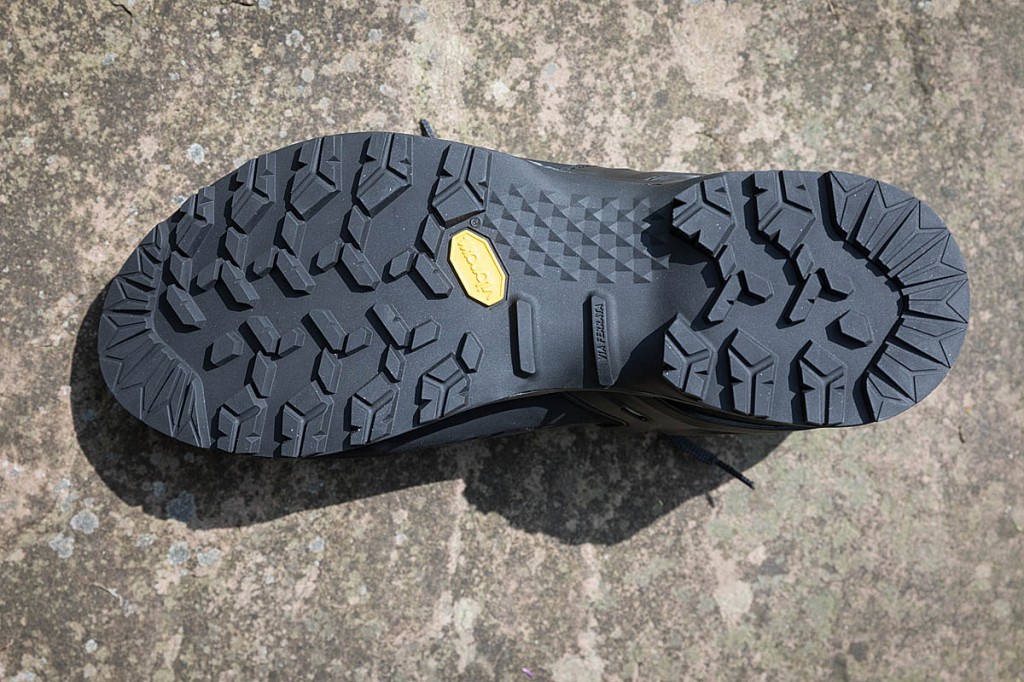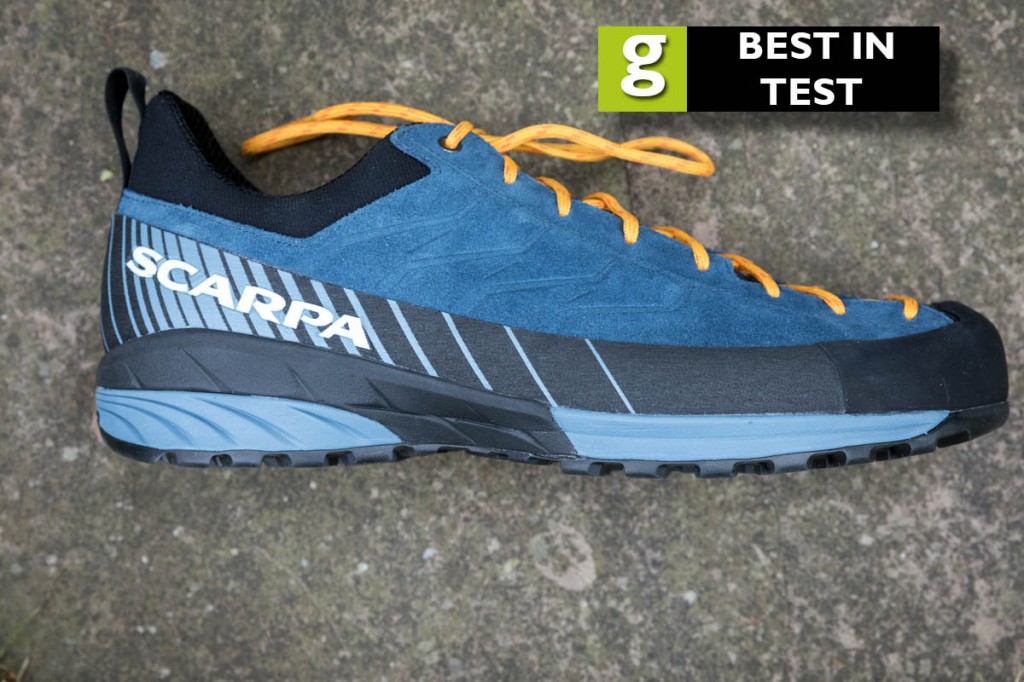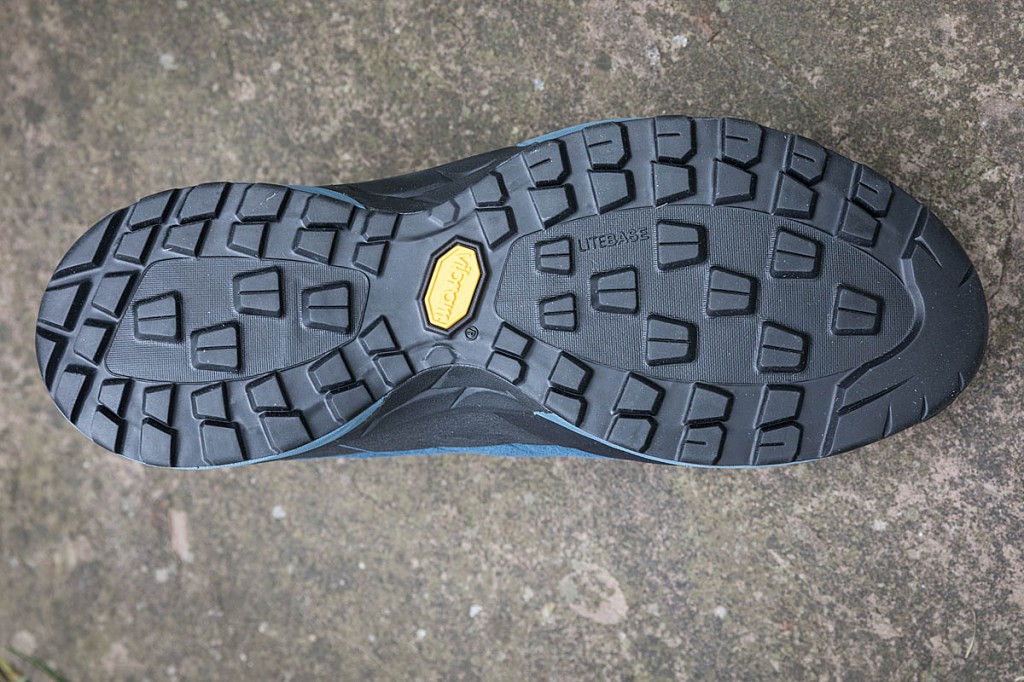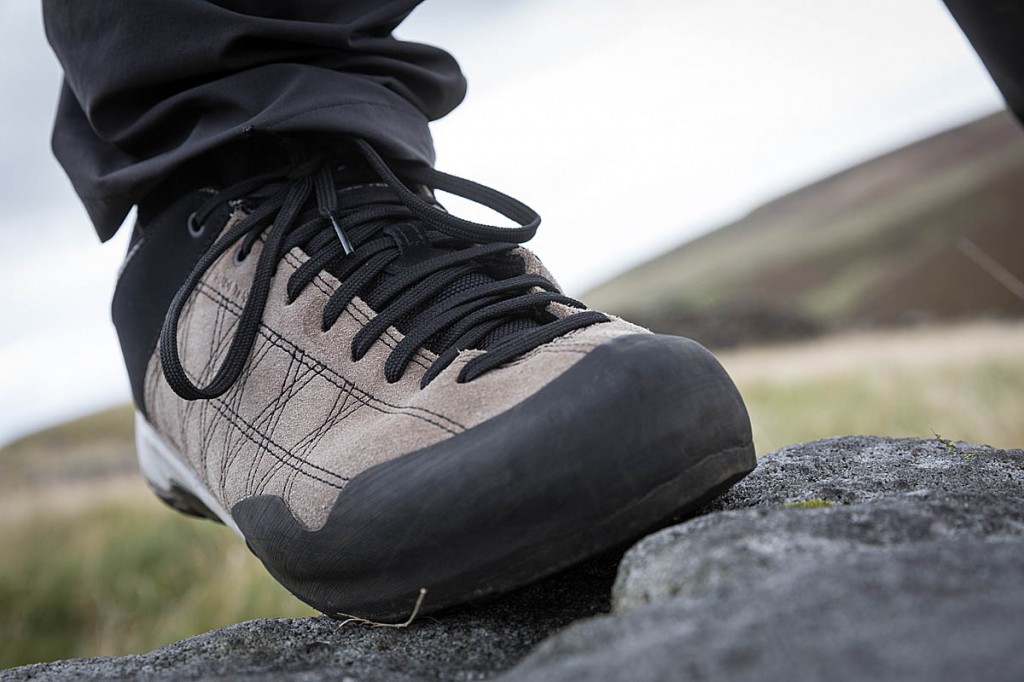Pulling on a pair of boots is a natural first step for a trip to the hills, but sometimes a lighter shoe suits the conditions better and will probably tire you out less.
We’ve tested 13 pairs of shoes extensively over the past few months, in a variety of terrain and weather. We’ve included what we’d term both approach shoes – useable on technical rock scrambles as well as walks – and trail shoes, suitable for more general walking, or even running use.
So it’s important to think of what use you’re going to put the shoes too. We evaluated a wide variety of footwear including some with waterproof features, some without. Some of the shoes felt more at home on Britain’s mountain paths; others more suited to a stroll on the riverbank or an urban outing.
As with all footwear, it’s important that they fit your feet. Feet come in lots of sizes and shapes, as do shoes, so if at all possible, try on any footwear before you commit to buying it. Some of the models have female-specific versions; others are simply made in a wide variety of sizes likely to fit either men or women.
Adidas Five Ten Climbing Guide Tennie
Price: £119.95
Country of manufacture: China
Weight: 881g/pair
Colour: light brown/black
Waterproofing: none
Sizes: 8-12½
Sole stiffness: 5/10
The Five Ten shoes are described as climbing shoes, and feature C4 Stealth rubber outsoles with a circular pattern for grip on rock. There’s also a solid section at the toe area of the sole, good for using on smaller footholds.
The shoes have a deep rubber toe rand with an edge between rand and outsole, again giving good purchase on rock.
The uppers are split-suede leather with stiffened toe box and heel cup. The ankle cuff has a good amount of padding, as does the tongue, adding to the comfort of the shoe on the hill. The lacing goes right to the toe area, enabling the Climbing Guide Tennie to be tensioned correctly around the foot.
The forefoot is fairly broad, but the outer edge of the toe area cuts in a little, making the toes feel a little more cramped than with some of the shoes. This is a function of the design to enable rock sections to be tackled with confidence.
The midsole has a medium amount of underfoot cushioning, and the insole also offers some shock absorption, but the outsole is hard rubber.
The Adidas Five Ten shoe felt stable on technical ground. Although classed as an approach shoe with climbing and scrambling capabilities, it was comfortable on non-technical terrain such as trails and footpaths, though the outer toe area does feel a little cramped. Sizing was about average.
Although there is no waterproofing, the suede did resist a little dampness.
Braking and traction on rock was very good; on grass there was a little movement. The shoes worked well on gravel trails.
Best use: technical terrain, scrambling, mountain paths.
Performance 25/30
Comfort 24/30
Grip 17/20
Quality 7/10
Value for money 7/10
Total score: 80/100
Berghaus Fellmaster Active GTX
Price: £125
Country of manufacture: Cambodia
Weight: 866g/pair
Colour: brown
Waterproofing: Gore-Tex
Sizes: 7-12
Sole stiffness: 3/10
The Fellmaster Active GTX is a conventional design in brown Nubuck, with a fairly low-slung profile.
There’s a hard rubber rand at the toe box which provided good protection for the foot on more technical ground, and the heel cup is also stiffened and reinforced.
The Berghaus shoes use a Gore-Tex Extended Comfort membrane to provide waterproofing, which worked well. The tongue gusset only extends about two-thirds of the way up the lacing, which can allow some ingress of water in deeper mud and wet sections.
The Fellmaster Active GTX shoes were comfortable in use, with a medium amount of underfoot cushioning. As with most of the footwear with membranes, they did feel a little warmer on hot days on the trails.
The forefoot is wide and felt quite roomy, with quite a large volume, despite the low profile. The heel cup held the foot well on uphill sections, and the ankle cuff and tongue had just the right amount of padding.
The outsole is a Vibram unit with Opti-Stud patterning, the rubber of which provided extra absorption. There’s an Ortholite insole with a good amount of foam padding, again adding to comfort on longer days.
The outsole has additional stiffening elements in front of the heel section which provided extra torsional stability in what is a fairly pliable shoe.
The Berghaus shoes felt generous in sizing, between a quarter and half size larger than average. They were middling in weight.
The uppers are made from a Nubuck from a tannery certified by the Leather Working Group for environmental performance.
The Fellmaster Active GTX shoes are good all-round walking shoes, with good grip on rock, both braking and traction, though the fairly soft soles didn’t provide as assured stability as stiffer shoes on technical ground.
Best use: maintained trails, hill paths, urban walks.
Performance 23/30
Comfort 26/30
Grip 17/20
Quality 7/10
Value for money 7/10
Total score: 81/100
Boreal Drom
Price: £130
Country of manufacture: Spain
Weight: 1,053g/pair
Colour: grey
Waterproofing: Dry Line
Sizes: 4-13
Sole stiffness: 5/10
The Drom is a very robust feeling shoe with good protection for the foot, though they were the heaviest in the test.
The uppers are 2mm split leather and there’s a hard rubber-coated toe box with a rand that extends back along the inner edge of the shoe. There’s a polyurethane overlay on the outer side of the uppers, wrapping round the heel. The heel cup is stiffened for good protection.
The shoe has board-lasted construction, which made it very stable on technical ground. The Vibram Pepe outsole had some of the best grip of any of the shoes, with good braking and very good traction on rock. Performance on gravel trails and softer ground was good too. The Drom was comfortable, with good underfoot cushioning from the midsole, which has an EVA upper layer.
Comfort around the ankle and heel were good too. The Boreal shoe has a short inbuilt gaiter as the rear section of the ankle padding, which gave good flexibility for the ankle. The tongue had just the right amount of padding, but the gusset is quite thin and had a tendency to wrinkle a little if the shoe wasn’t laced carefully, introducing a little discomfort on the side of the foot. The gusset only comes half-way up the lacing, which allowed water to get into the shoe on deeper bogs and puddles.
The lacing extends to the toe section, allowing a good snug fit to be obtained. The forefoot is fairly wide and there was no pinching of the foot and toes. The insole has a good amount of foam padding too, and the shoe has breathable Moisture-Tech lining.
Though the Boreal shoes are designed for technical terrain and use in the mountains, their design made for good comfort too, so they can be used for everyday trips and walking on less onerous routes. A higher tongue gusset would prevent water entering the shoes on boggier ground.
Best use: technical terrain, scrambling, via ferrata, mountain paths, maintained trails, urban walks.
Performance 24/30
Comfort 25/30
Grip 18/20
Quality 8/10
Value for money 7/10
Total score: 82/100
Craghoppers Onega/Jacara
Price: £90
Country of manufacture: China
Weight: 883g/pair
Colour: blue
Waterproofing: Aquadry
Sizes: 6-13; women’s Jacara 3-8
Sole stiffness: 6/10
The Onega and the women’s version the Jacara have a design that doesn’t shout ‘outdoors’ with suede uppers and fairly understated trim.
The Craghoppers shoe has a stiffened toe box with rubberised overlay, and the heel cup is also stiffened. The uppers have the brand’s own Aquadry waterproofing.
The forefoot is quite wide, but the toe section narrows a little. The ankle cuff has good padding as does the tongue. The gusset comes a good way up the lacing area, and kept most of the rain and water out during testing.
The lining mesh has NosiLife treatment for protection against insects.
The outsole is a Vibram unit and provided fairly good braking and good traction on rock. Performance on gravel tracks was good. The lugs are deep, making the sole suited to muddier terrain than some of the shoes.
There’s good underfoot cushioning from the EVA midsole. The sole unit was fairly stiff and provided good stability on more technical ground.
The Craghoppers shoe is styled so as not to look out of place on the stroll to the shops or pub, but has enough technical design to make it useful on the hill. The price is competitive too.
Best use: maintained trails, countryside walks, hill paths, urban walks.
Performance 21/30
Comfort 27/30
Grip 14/20
Quality 7/10
Value for money 8/10
Total score: 77/100
Danner Trail 2650
Price: £124 (price converted from US$ at time of sale)
Country of manufacture: Vietnam
Weight: 650g/pair
Colour: brown
Waterproofing: none
Sizes: 6½-13½ (medium and wide options); women’s 3-9
Sole stiffness: 3/10
The Danner Trail 2650 is a nicely styled shoe that doesn’t look out of place on the street, but which has technical features for trail and hillwalking.
The uppers are a combination of suede and fabric. They are soft and pliable, making for a comfortable experience. There’s venting on the sides of the shoe which helped keep my feet cooler on warm days. The ankle cuff has a medium amount of foam padding, as does the tongue, but both were comfortable during extended use.
The outsole extends upwards at the front of the shoe to form a rubberised protected area. The toe box also has a semi-stiffened overlay to provide some protection for the foot. Rather than a rigid heel cup, the Trail 2650 has an external heel counter to help keep the foot stable. This worked well and there was no lateral movement of the foot over more technical terrain.
The Danner shoes have good underfoot cushioning, with an EVA midsole and an insole with extra foam at the heel and forefoot area. There’s a TPU shank which gave good torsional stiffness and added stability on technical routes.
The forefoot is wide and there was no pinching there or at the toe area.
The outsole is a Vibram unit with Megagrip compound. Traction and braking on rock, grass and stone flags was very good, with braking very good on these surfaces with just a slight movement on steep rock downhill.
Over an extended period of testing, the Danner shoes were very comfortable, and performed well in a variety of settings, from everyday street use to trail walking and country footpaths.
Styling makes them suitable for urban use as well as on the hill. We wouldn’t take them on very technical routes where protection against rock knocks was needed, as the uppers are soft and pliable. There’s no waterproofing so if you’re out in the rain or heading through wet bogs or puddles, expect damp feet. A waterproof model is available, costing about £16 more.
But the ventilation and mesh lining did make them a good choice for those warmer days.
Best use: everyday use, urban walks, maintained trails, countryside walks.
Performance 22/30
Comfort 28/30
Grip 17/20
Quality 7/10
Value for money 7/10
Total score: 81/100
Hanwag Belorado II TubeTec GTX
Price: £170
Country of manufacture: Croatia
Weight: 1.020g/pair
Colour: black/red
Waterproofing: Gore-Tex
Sizes: 6-13; women’s 3½-9
Sole stiffness: 5/10
The Belorado II is a European-made trail shoe with fabric and suede uppers with the addition of Gore-Tex waterproofing.
The main part of the uppers is made from polyamide, and there are suede sections at the toe, rand, heel and tongue areas. The toe box has an added rubberised overlay, with a small outsole extension at the very front of the shoe.
The heel cup is stiffened to give protection and hold the foot in place. There’s ventilated foam padding around the ankle cuff and tongue.
The midsole is polyurethane and, along with insole foam padding, offered a good amount of underfoot cushioning. The shoe uses Hanwag 3D PrismBase technology to save some weight in this area, but the Belorado II is still a fairly hefty shoe, tipping the scales at just over a kilo per pair of size 9½s. But it did feel robust and stable.
The outsole is Hanwag’s TubeTec construction, and offered good grip on grass and stone flags, very good traction on rock and good braking on rocky surfaces.
The Gore-Tex waterproofing worked well, with a high tongue gusset helping keep water out.
The forefoot is medium to wide, though for me the outer section felt just a little cramped. Volume is fairly low. The Hanwag shoe felt stable on more technical terrain and overall was comfortable. Quality was good and the shoe felt durable.
I found the Belorado II a good choice for wetter days when the waterproofing worked well.
Best use: trail walking, hillwalking, countryside walks.
Performance 26/30
Comfort 24/30
Grip 17/20
Quality 8/10
Value for money 7/10
Total score: 82/100
Hoka One One Torrent 2
Price: £110
Country of manufacture: Vietnam
Weight: 548g/pair
Colour: blue/yellow
Waterproofing: none
Sizes: 6½-14½; women’s 4-9½
Sole stiffness: 4/10
The Torrent 2 is designed with the trail runner in mind, but the shoe is suited to walkers too.
It’s the lightest in the test, and uses a close mesh fabric in the uppers, with a plastic overlay round the bottom half of the shoe. The mesh contains recycled material.
There’s a small upwards extension of the outsole at the front of the shoe for added traction, but the toe box is soft, with only minimal protection against knocks. The heel cup is stiffened, and held the foot well and protected that area while out on the hill.
The forefoot is fairly wide and there was no pinching in the toe area. The mesh uppers allow cooling air to the foot, noticeable on windy days. There is no waterproofing, so heading through deep puddles or using the Hoka One One shoe in the rain will lead to wet feet. Over time, the foot does dry out a little after walking through wet terrain, thanks to the venting properties of the mesh. There’s an adequate amount of foam padding round the ankle cuff and also in the tongue.
Hoka shoes are usually noted for their thick cushioned soles, and the Torrent 2 has a good amount, though less than some of the brand’s models. The midsole is neutral, with no added stability for users with overpronation of the foot.
The sole provides the best underfoot cushioning of any in the test, thanks to its pliable midsole and a little additional foam padding in the ventilated insole.
The outsole is Hoka’s own model, with a redesigned lug pattern for better stability on a variety of terrains. Grip on grass and stone flags was very good, as was traction uphill on rock. Braking on rock was good.
The Torrent 2s felt very assured on steep gravel trails, with no slipping.
For runners, the heel-to-toe drop is 5mm.
The Hoka One One shoes were among the most comfortable in the test, with excellent underfoot cushioning and uppers that held the foot well without constriction. Their light weight makes them especially suited to long routes – in the dry – as there is no protection against rain and deep puddles.
There is, however, little protection against knocks from rocks and stones, so I wouldn’t want to tackle scree slopes in them. But for maintained paths and short sections of more technical terrain, the Torrent 2 felt very secure.
Best use: trail running, walking trails, gravel paths, countryside walks, hill paths, urban walks.
Performance 24/30
Comfort 28/30
Grip 17/20
Quality 7/10
Value for money 7/10
Total score: 83/100
Jack Wolfskin Force Striker Texapore Low
Price: £120
Country of manufacture: Cambodia
Weight: 982g/pair
Colour: black
Waterproofing: Texapore O2+
Sizes: 6-12½; women’s 3-9
Sole stiffness: 5/10
The Force Striker shoe is a fairly beefy design, with black uppers in fabric with TPU overlays. There’s a generous rubberised rand that extends back along the shoe and the toe box is stiffened. The outsole extends upwards a little way at the front of the shoe to give protection to the toes.
The heel cup is stiffened too, but not quite as much as some of the shoes in the test. There’s a good amount of foam padding in the tongue and around the ankle cuff. The uppers have a Texapore waterproof membrane and the tongue bellows extend well up the shoe to keep rain and splashes out. The Texapore wasn’t over-hot in use on warmer days.
The forefoot was medium width and volume.
The midsole has EVA cushioning along with reflex foam at the heel area which, together, provided a medium amount of underfoot cushioning. There’s also a Forceplate element at the forefoot which helped torsional stability and made for a more reassuring foot placement on technical ground. It makes the area under the ball of the foot noticeably stiffer to help traction.
The outsole is a Vibram unit that provided very good grip. The Jack Wolfskin shoes had good traction on grass and stone flags. Braking and traction on rock was very good too.
One irritating aspect of the Force Striker Texapore Low was the tendency of both insoles to work backwards in the shoe while in use. This left the extreme front of the toes without cushioning and meant the footbed rose up the back of the heel area.
Apart from that, the shoes were generally comfortable, with a medium amount of underfoot cushioning and medium width and volume in the forefoot. The waterproofing worked well with no leaking and didn’t contribute too much to overheating on warmer days.
Sizing of the Jack Wolfskin shoe was about average.
Best use: trail walking, gravel paths, countryside walks, hill paths, urban walks, longer-distance hikes.
Performance 24/30
Comfort 25/30
Grip 17/20
Quality 7/10
Value for money 7/10
Total score: 80/100
Keen Venture Vent
Price: £110
Country of manufacture: China
Weight: 966g/pair
Colour: black/grey
Waterproofing: none
Sizes: 6-14
Sole stiffness: 3/10
The Venture Vent is a neutral-design shoe that doesn’t look out of place on the High Street but is equally at home on the trail.
As you would expect from its name, the Keen shoe is well ventilated and worked well on warmer days. The uppers are mesh fabric, with overlays of TPU in the heel and rear sections of the shoe. There’s an overlay at the toe area which is fairly soft, so doesn’t offer much in the way of protection against knocks, but there’s a wide upwards extension of the rubber outsole which does protect and provide grip at the front of the Venture Vent.
The heel cup is stiffened and protects the foot here and, combined with the Konnect Fit system, kept the rear of the foot in place and provided the good stability. The system is cord that wraps around the whole heel and rear shoe section and connects a metal lace loop that cinches the shoe around the foot.
The mesh uppers make for a cool experience when walking in the Venture Vent, though of course there’s no waterproofing so splashes and rain will penetrate the shoe. The fabric is comfortable and there was no rubbing when out on the trail. The forefoot is wide and volume is medium.
Padding around the ankle cuff and on the tongue was adequate.
There’s a fairly thick EVA midsole which, combined with a well padded insole, provided good underfoot cushioning. There’s extra foam at the heel area in the midsole, which has probiotic anti-odour properties without the use of hazardous chemicals or heavy metals. This worked well at keeping down any whiffiness during testing.
The outsole is Keen’s All Terrain model and there’s also a shank to provide torsional stability. The Venture Vent had good grip and braking on grass, stone flags and gravel. Braking and traction on rock were fairly good.
The Keen shoes were very comfortable and cool and were a good choice on hot and warm days. They don’t shout ‘outdoors’ so are good for use in the urban environment as well as out on the trail. They are medium weight, tipping the scales at less than a kilo for a pair of 9½s.
They’re good for everyday use while having enough technical capability to use on the trail or even easier rocky terrain – on dry days.
Best use: urban walks, everyday wear, trail walking, dry weather, warm days.
Performance 24/30
Comfort 26/30
Grip 17/20
Quality 7/10
Value for money 7/10
Total score: 81/100
La Sportiva TX5 Low GTX
Price: £150
Country of manufacture: China
Weight: 1,008g/pair
Colour: black/grey/yellow
Waterproofing: Gore-Tex Extended Comfort
Sizes: 6-12½
Sole stiffness: 5/10
La Sportiva describes the TX5 as a low-cut boot but it’s certainly a shoe in our book.
However, it does share features of a boot, with its Nubuck leather uppers and beefy rand offering good protection all the way round the lower reaches of the foot.
The leather part of the uppers is soft and supple, but the extensive stiffened toe box defends against knocks and rocks. The rubberised rand is deep and goes all the way round the shoe. The heel cup is stiffened too, offering good protection.
The lacing goes a good way towards the toe area and incorporates a heel wrap-around section which, when the laces are tightened, helps cinch in the ankle cuff for a snug fit. There’s good foam padding around the cuff and the tongue is reasonably well padded.
The TX 5 Low has a Gore-Tex membrane and the tongue gaiter extends a good way up the instep and kept rain and splashes out well during testing.
The shoe felt snug and comfortable on the foot, though its rugged construction puts it among the heavier footwear in the test. The EVA insole and midsole provided a medium amount of underfoot cushioning and good stability on rocky and technical terrain.
The outsole uses a Vibram Megagrip compound with an asymmetrical lug pattern between outer and inner edges. Grip from La Sportiva’s shoe was very good. On grass and stone flags traction and braking were very good and on rock the shoes performed well too, with both braking and traction very good, and a stable feel.
Out on the trail and hill, the TX5 felt capable and stable, while giving good comfort on longer walks. The excellent grip and protection made it ideal for more technical terrain and rocky routes. The Gore-Tex membrane will keep out the rain though it did add to the shoe’s warmth a little when the sun was out.
Best use: trail walking, gravel paths, hill paths, longer-distance hikes, scrambles, via ferrata.
Performance 26/30
Comfort 25/30
Grip 18/20
Quality 8/10
Value for money 7/10
Total score: 84/100
Mammut Hueco Low GTX
Price: £140
Country of manufacture: Vietnam
Weight: 775g/pair
Colour: blue
Waterproofing: Gore-Tex Performance Comfort
Sizes: 6½-13; women’s 3½-8½
Sole stiffness: 3/10
The Hueco Low is nicely styled with velour leather uppers or, as someone pointed out, blue suede shoes.
The design in understated, making them suitable for everyday use, as well as technical use on the hill.
The uppers are soft and pliable and there’s a low rubber toe box bumper, along with rubberised protection at the heel cup area. The top two lace holes are linked to part-covered cords which cinch in the instep area of the foot when the lacing is tightened.
There fairly minimal foam padding around the ankle cuff and in the tongue. The Mammut shoes have Gore-Tex waterproofing and a high tongue gusset, which kept the water out well.
The forefoot is fairly broad, but the toe area narrows quite a bit. The EVA midsole offered a medium amount of underfoot cushioning.
The outsole is a Michelin unit with a fairly tight pattern. This worked well, giving very good grip on grass and stone flags, and very good traction and braking on rock. Stability was fairly good on more technical terrain.
The main problem I had with the Mammut shoe was that the interior of the heel area rubbed, causing problems on longer walks. The source of the rubbing seemed to be where the heel cup cuts in fairly sharply about two-thirds of the way up, creating an interior ridge. It’s a shame about this as the shoes were otherwise comfortable.
I haven’t seen much in the way of other people encountering this, so maybe it’s just individual to my feet.
Sizing of the Mammut shoes was about average.
The Mammut Hueco Low GTX shoes are lightweight and versatile, with waterproofing that worked well and a design that makes them suitable for both urban use and trail walking. Grip was very good too, allowing assured progress on rocky sections of routes.
Best use: trail walking, gravel paths, hill paths, urban walks, everyday use.
Performance 24/30
Comfort 22/30
Grip 18/20
Quality 8/10
Value for money 7/10
Total score: 79/100
Salewa Mountain Trainer 2
Price: £150
Country of manufacture: Romania
Weight: 938g/pair
Colour: black
Waterproofing: none
Sizes: 6-13; women’s 3-8
Sole stiffness: 5/10
The Mountain Trainer 2 is, as its name suggests, aimed at walkers heading for the peaks and hills, and has features designed to provide stability and protection on technical routes.
The uppers of the European-made Salewa shoe are 1.6mm suede with an overlay containing the brand’s 3F system that links the top of the lacing area with the shoe’s heel and arch area, providing a good stable hold on the rear of the foot.
There’s a sturdy, deep, rubberised rand running from the hardened toe box all the way round to the stiffened heel cup. Lacing extends, climbing-shoe-style, right to the front of the toe area. The suede areas have venting to help keep feet cool on longer and warmer routes.
The tongue sits under an elasticated fabric section at the instep and has minimal padding but was still comfortable. There’s generous foam padding around the ankle cuff.
The midsole uses expanded polyurethane and, combined with the foam insole, provided a medium amount of underfoot cushioning.
The forefoot is quite broad and is medium volume, but the toe section narrows at the edges, which felt a little pinched for my feet. There was also a slight discomfort from time to time at the flex point at the base of the toes.
The outsole is a Vibram unit with quite deep lugs, particularly at the heel. The toe and heel area also have areas that work well on scramble routes. There is also a pair of right-angled lugs at the mid-foot area designed to help grip on ladder sections of vie ferrate.
A nylon element in the midsole adds stiffness to the shoe, adding to stability, particularly torsional security, on technical terrain. Overall, the Mountain Trainer 2 felt very stable.
Grip on grass and stone flags was very good, and the deep lugs helped traction on mud. On rock, traction was very good and braking was good.
The Salewa shoes felt very robust, stable and protective and worked well on technical routes, while tipping the scales at less than a kilo a pair, making them good on longer walks. Feet remained fairly cool on warmer days thanks to the venting in the uppers. Although there’s no waterproof membrane, the suede uppers did resist rain and splashes quite well.
Best use: trail walking, gravel paths, hill paths, scrambles, mountain walking, via ferrata.
Performance 26/30
Comfort 24/30
Grip 17/20
Quality 8/10
Value for money 7/10
Total score: 82/100
Scarpa Mescalito
Price: £160
Country of manufacture: Romania
Weight: 885g/pair
Colour: blue/grey
Waterproofing: none
Sizes: 6½-12½; women’s 4¼-8
Sole stiffness: 4/10
The Scarpa Mescalito with good design features for technical terrain, combined with very good comfort overall.
The uppers are 1.8mm suede and offer a good snug fit for the foot. The lacing is climbing style, extending to the front toe area. The stiffened toe box has a wide rubber overlay. A polyurethane rand wraps around the lower area of the shoe from toe box to heel cup, which is also hardened for protection.
The rand’s robust qualities and the softer feel of the suede uppers combine well to provide a balance of protection and comfort.
The tongue is well padded and has a gusset that extends about two-thirds of the way up the instep. The ankle cuff has good foam padding too.
The midsole has dual density EVA and, though the insole has minimal padding, the overall underfoot cushioning was good.
The outsole is a Vibram Dynamis unit with a solid toe area for rock scrambles. Grip on grass and stone flags was very good and on rock, the Scarpa shoes provided good traction and good braking.
The shoes are towards the lighter end of the scales and this, combined with good comfort, made them a good choice for longer walks.
Although the Mescalito has no membrane, the suede uppers did repel some splashing and coped with a shower or two.
Stability on technical terrain felt good and the stiffened toe box and heel cup offered protection against rock knocks.
The comfort of the Scarpa shoes was very good. The forefoot is quite broad and medium volume. Although the toe area down narrow, it didn’t feel to be pinching my feet. After a day on the hill, despite its technical capabilities, the comfort was maintained.
In fact the Mescalito is comfortable enough to use as an everyday shoe too.
Best use: trail walking, hillwalking, longer-distance hikes, scrambles, everyday use.
Performance 26/30
Comfort 27/30
Grip 17/20
Quality 8/10
Value for money 7/10
Total score: 85/100
The Scarpa Mescalito topped the tables in the test, scoring highly both for technical performance and comfort. Just behind was La Sportiva’s TX5 Low GTX, the top performer among waterproof models.
For outright comfort, the Hoka One One Torrent 2 was unbeatable, its generous underfoot padding and good ventilation making for an easy experience. For fast movers, it’s the lightest shoe in the test.
The Craghoppers Onega and women’s version the Jacara represented good value for money.
- All the shoes in the test were supplied to grough by the brands.
